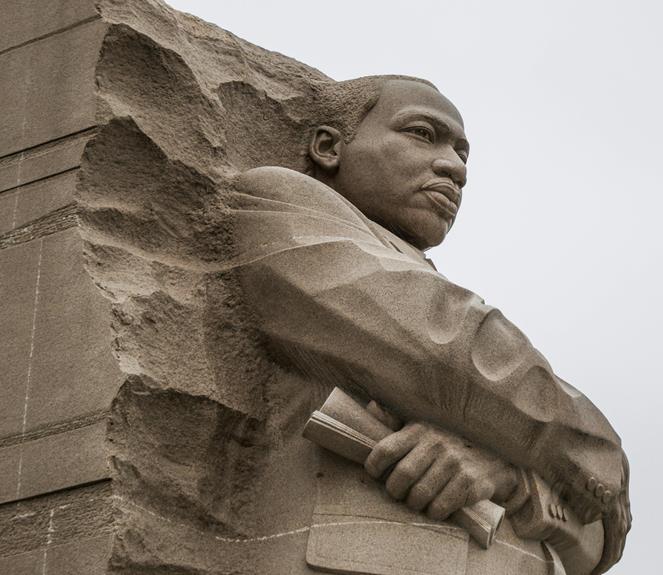The ruins of Tikal in Guatemala not only offer a glimpse into the ancient Mayan civilization but also raise intriguing questions about their disappearance. The sheer scale and complexity of the city's structures, coupled with the lush surroundings of the rainforest, evoke a sense of mystery that continues to captivate archaeologists and historians. As you explore the remnants of this once-thriving metropolis, you will find yourself pondering the enigmatic reasons behind the decline of this remarkable civilization.
Key Takeaways
- Tikal showcases Mayan architectural and engineering brilliance.
- The ruins date back over two millennia.
- Tikal was a major religious and cultural center of the Mayan civilization.
- The site is a haven for wildlife enthusiasts with diverse flora and fauna.
- Guided tours provide historical insights for a fulfilling visit.
The History of Tikal
Situated in the heart of the dense jungles of Guatemala, Tikal stands as a magnificent demonstration of the ancient Mayan civilization's rich history and cultural legacy. The history of Tikal dates back over two millennia when it was one of the most powerful city-states in the Mayan world. This UNESCO World Heritage site was a center of Mayan culture, politics, and religion, with its peak during the Classic Period between 200 and 900 AD.
The ancient temples of Tikal are a reflection of the architectural and engineering prowess of the Mayan civilization. These monumental structures, towering above the jungle canopy, served both practical and symbolic purposes. The temples were not only places of worship but also astronomical observatories and royal palaces. The grandeur of Tikal's temples reflects the Mayan belief in the connection between the earthly domain and the heavens, with each structure meticulously aligned to celestial events such as solstices and equinoxes.
The Mayan civilization's intricate understanding of mathematics, astronomy, and engineering is evident in the precise construction of Tikal's temples. The use of corbel arches, steep staircases, and intricate carvings showcases the sophisticated architectural techniques employed by the Mayans. These temples, with their steep pyramidal structures reaching towards the sky, continue to awe visitors and researchers alike, offering a glimpse into the profound cultural and scientific achievements of the ancient Mayan civilization.
Architectural Wonders of Tikal
The architectural wonders of Tikal, Guatemala, exemplify the intricate craftsmanship and engineering ingenuity of the ancient Mayan civilization. The Mayan civilization, known for its advanced knowledge of mathematics, astronomy, and architecture, left a lasting legacy in the form of impressive temple complexes that still stand tall in Tikal today.
One of the most striking features of Tikal's architecture is its temple architecture. The temples in Tikal are characterized by their grand scale, precise orientation towards celestial bodies, and intricate decorative elements. These temples served both practical and symbolic purposes for the Mayan people, functioning as religious centers, astronomical observatories, and symbols of power and authority.
The Temple of the Great Jaguar, also known as Temple I, is a prime example of Mayan temple architecture at its finest. This towering structure, with its steep staircases and elaborate roof comb, showcases the Mayan's mastery of stone construction and architectural design. Similarly, the Temple of the Masks, or Temple II, with its distinctive mask facade, highlights the Mayan's artistic flair and attention to detail.
Cultural Significance of Tikal
Exemplifying a rich tapestry of cultural heritage, Tikal in Guatemala stands as a testament to the profound societal and spiritual significance embedded within its ancient structures. This UNESCO World Heritage Site served as a major center of the Mayan civilization and continues to intrigue visitors with its historical depth and cultural importance.
- Religious Center: Tikal was not just a city; it was a sacred site where rituals, ceremonies, and offerings were made to appease the gods. The temples and pyramids served as conduits between the earthly world and the heavens, reflecting the Mayan people's deep-rooted spiritual beliefs.
- Urban Planning: The layout of Tikal's structures was meticulously planned, showcasing the Mayan's advanced knowledge of astronomy, mathematics, and architecture. The positioning of buildings in alignment with celestial events underscores the civilization's sophisticated understanding of the cosmos.
- Artistic Expression: The intricate carvings, stelae, and hieroglyphics found throughout Tikal depict mythological narratives, historical events, and genealogies. These artistic expressions not only adorned the city but also served as educational tools and cultural symbols for the Mayan society.
- Social Hierarchy: The grandeur of Tikal's elite residences and administrative buildings reflects the stratified social structure of the Mayan civilization. The city's layout, with distinct areas for the ruling class, priests, and commoners, provides insight into the societal norms and power dynamics of the time.
Wildlife in Tikal
Nestled within the ancient ruins of Tikal lies a diverse array of wildlife that thrives amidst the remnants of a once vibrant civilization. Tikal, located in the heart of the Guatemalan jungle, is a haven for nature enthusiasts and bird watchers alike. The surrounding tropical rainforest provides a rich habitat for a wide variety of species, making it a prime destination for wildlife enthusiasts.
Bird watching in Tikal is a popular activity due to the region's incredible avian diversity. With over 300 species of birds calling Tikal home, visitors have the opportunity to spot colorful toucans, majestic eagles, and melodious parrots among the ancient ruins. The early morning hours are particularly rewarding for bird watchers, as the forest comes alive with the calls and songs of its feathered inhabitants.
For those seeking a more immersive experience, jungle treks offer the chance to encounter Tikal's wildlife up close. Guided tours lead visitors through the dense foliage, where sightings of howler monkeys, coatis, and even elusive jaguars are possible. These treks not only provide a glimpse into the natural beauty of Tikal but also offer a deeper understanding of the delicate ecosystem that sustains this thriving wildlife population.
Tips for Visiting Tikal
Among the mesmerizing wildlife and ancient ruins of Tikal, practical advice for visitors can enhance the overall experience and guarantee a smooth exploration of this historical and ecological gem. When planning your visit to Tikal, consider the following tips:
- Guided Tours: Opting for a guided tour can provide invaluable insights into the history and significance of the ruins. Knowledgeable guides can guide you through the expansive site, pointing out hidden gems and offering a deeper understanding of the Mayan civilization that once thrived there.
- Early Morning Visits: To avoid crowds and experience the mystical ambiance of Tikal at its best, consider entering the site early in the morning. The cool dawn air, echoing sounds of the jungle awakening, and the sight of mist shrouding the temples create a truly unforgettable experience.
- Proper Footwear: Given the vast area to cover and the uneven terrain, wearing comfortable and sturdy shoes is essential for exploring the ruins. Sneakers or hiking boots are recommended to ensure a safe and enjoyable adventure through the jungle paths.
- Respect for Nature: While starting on jungle adventures and exploring the ancient ruins, it is essential to respect the flora and fauna around you. Avoid littering, stay on designated paths, and admire the wildlife from a respectful distance to preserve the beauty and integrity of Tikal for future generations.
Frequently Asked Questions
Are There Any Ghost Stories or Legends Associated With Tikal?
Paranormal encounters and supernatural myths often revolve around local folklore and mysterious apparitions in various historical sites. These legends can add an element of intrigue and mystery to the cultural heritage of a place, engaging the imagination of visitors and locals alike.
Stories of ghostly encounters and unexplained phenomena are common in many ancient ruins around the world, perpetuating the allure of these sites and sparking curiosity about the unknown.
Can Visitors Explore Tikal at Night?
Under the shroud of night, the ruins of Tikal reveal a different charm as the moonlight dances upon ancient structures. Night tours at Tikal offer visitors a unique opportunity to explore this archaeological wonder under a starlit sky.
While traversing the pathways, one may encounter the vibrant wildlife that awakens with the setting sun. These nocturnal adventures provide an enchanting experience, blending history with the mystique of the jungle after dark.
Are There Any Hidden Tunnels or Underground Chambers in Tikal?
Exploration possibilities within ancient sites often encompass uncovering architectural mysteries such as hidden tunnels or underground chambers. These enigmatic features can offer insights into the structural complexity and societal functions of historical civilizations.
Scholars and archaeologists engage in meticulous research and excavation to reveal these concealed elements, shedding light on the intricate design and purpose behind these subterranean spaces. The allure of discovering such hidden passages adds a layer of intrigue to the exploration of ancient ruins.
What Is the Significance of the Different Colors Used in Tikal's Structures?
Exploring symbolism within ancient structures offers a fascinating glimpse into the cultural significance of architectural details.
The use of different colors in Tikal's structures serves as a visual representation of societal beliefs and spiritual connections.
These hues were carefully selected to reflect various aspects of life, from earthy tones symbolizing fertility and growth to vibrant shades representing power and divinity.
Understanding the significance of these color choices adds depth to the interpretation of Tikal's architectural legacy.
Are There Any Special Ceremonies or Rituals Performed at Tikal?
Traditional ceremonies and Mayan rituals play a significant role in indigenous communities worldwide. These spiritual practices are deeply rooted in ancient customs and beliefs, serving as a way to connect with the spiritual dimension and honor ancestors.
Across various cultures, ceremonies are performed to mark important events or seek guidance from the divine. Such rituals hold immense cultural and historical value, preserving traditions that have been passed down through generations.
Conclusion
In summary, the ruins of Tikal in Guatemala stand as a remarkable evidence of the ancient Mayan civilization's ingenuity and cultural achievements.
Just as the Great Jaguar Temple rises majestically above the rainforest canopy, Tikal's legacy looms large in the annals of history.
Its architectural wonders, cultural significance, and thriving wildlife all contribute to the allure of this ancient city, inviting visitors to explore the mysteries of the past.


